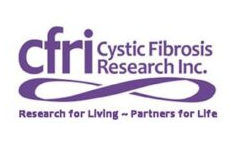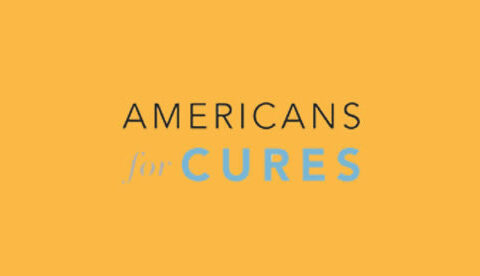About
- The normal CFTR gene gives instructions on a channel across the membrane of cells that produce mucus, saliva, tears and digestive enzymes. This channel is affected by the genetic mutation that causes CF.
- As of 2017, over 1,700 different mutations of the CFTR gene have been identified, 300 of which have been shown to cause CF.
- People with CF have thick, sticky mucus that builds up and clogs the airways and passageways of the respiratory, digestive, endocrine, and reproductive systems. This results in the collection of harmful bacteria inside the body which can lead to serious infections. The thick mucus can block ducts in the digestive system, including the pancreas, causing severe nutritional and digestive problems as well as stunted growth.
- The current standard of care for CF patients requires 1-5 hours of treatment per day, every day, alongside a series of inhaled nebulized medications, antibiotics and anti-inflammatory medications that are accompanied by equipment and exercises that dislodge and remove the mucus from the lungs.
- About 30,000 people in the United States are living with CF, and 70,000 worldwide. There are approximately 1,000 new cases of CF diagnosed each year.
- The current life expectancy for those born with CF in 2014 or later is the mid-40s, but the median age of death in 2019 was only 31 years.
How Stem Cell Research Can be Used to Treat Cystic Fibrosis
- Skin or blood cells can be isolated from CF patients and a “lung in a dish” model generated. This disease model can then be used to study the potential effect of different drugs and medications on the lung tissue of CF patients.
- If the specific mutation has been identified, cells from a CF patient can be taken from the epithelium, the mutation can be corrected in those cells, and the corrected cells can then be reintroduced back to the patient where they could populate the airways/passageways with healthy new epithelial tissue. This approach is currently being investigated.
CIRM’s Progress: Selected Research Highlights
- CIRM-funded researchers at Stanford have used a stem cell-based approach to correct the CFTR-deltaF508 mutation, one of the most common mutations in CF patients. Briefly, airway stem cells were isolated, corrected, and shown to differentiate into epithelial sheets. Further, the corrected cells were embedded onto an already FDA-approved scaffold and were shown to restore normal function of the CFTR gene. These studies have paved the way for a potential future clinical trial in which CF patients may be able to receive corrected airway stem cells that will reduce and/or stop production of the thick mucus.
- Researchers at Cedars-Sinai Medical Center have identified reparative cells of the lungs that maintain and repair lung tissue. This research has made great progress in developing a “lung-in-a-dish” model to further study the mechanisms of lung disease and ways to treat/repair damage.
Cystic Fibrosis Organizations Endorsing YES on Prop 14

To see the full list of over 80 patient advocate organizations that endorse YES on Prop 14
please click hereAbout
- The normal CFTR gene gives instructions on a channel across the membrane of cells that produce mucus, saliva, tears and digestive enzymes. This channel is affected by the genetic mutation that causes CF.
- As of 2017, over 1,700 different mutations of the CFTR gene have been identified, 300 of which have been shown to cause CF.
- People with CF have thick, sticky mucus that builds up and clogs the airways and passageways of the respiratory, digestive, endocrine, and reproductive systems. This results in the collection of harmful bacteria inside the body which can lead to serious infections. The thick mucus can block ducts in the digestive system, including the pancreas, causing severe nutritional and digestive problems as well as stunted growth.
- The current standard of care for CF patients requires 1-5 hours of treatment per day, every day, alongside a series of inhaled nebulized medications, antibiotics and anti-inflammatory medications that are accompanied by equipment and exercises that dislodge and remove the mucus from the lungs.
- About 30,000 people in the United States are living with CF, and 70,000 worldwide. There are approximately 1,000 new cases of CF diagnosed each year.
- The current life expectancy for those born with CF in 2014 or later is the mid-40s, but the median age of death in 2019 was only 31 years.
How Stem Cell Research Can be Used to Treat Cystic Fibrosis
- Skin or blood cells can be isolated from CF patients and a “lung in a dish” model generated. This disease model can then be used to study the potential effect of different drugs and medications on the lung tissue of CF patients.
- If the specific mutation has been identified, cells from a CF patient can be taken from the epithelium, the mutation can be corrected in those cells, and the corrected cells can then be reintroduced back to the patient where they could populate the airways/passageways with healthy new epithelial tissue. This approach is currently being investigated.
CIRM’s Progress: Selected Research Highlights
- CIRM-funded researchers at Stanford have used a stem cell-based approach to correct the CFTR-deltaF508 mutation, one of the most common mutations in CF patients. Briefly, airway stem cells were isolated, corrected, and shown to differentiate into epithelial sheets. Further, the corrected cells were embedded onto an already FDA-approved scaffold and were shown to restore normal function of the CFTR gene. These studies have paved the way for a potential future clinical trial in which CF patients may be able to receive corrected airway stem cells that will reduce and/or stop production of the thick mucus.
- Researchers at Cedars-Sinai Medical Center have identified reparative cells of the lungs that maintain and repair lung tissue. This research has made great progress in developing a “lung-in-a-dish” model to further study the mechanisms of lung disease and ways to treat/repair damage.
Cystic Fibrosis Organizations Endorsing YES on Prop 14
To see the full list of over 80 patient advocate organizations that endorse YES on Prop 14, please click here.


